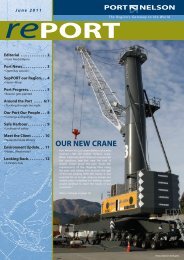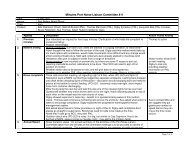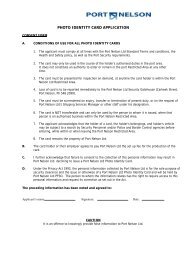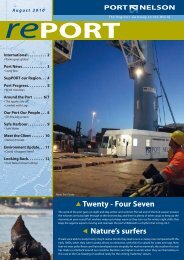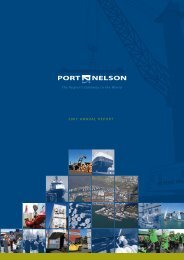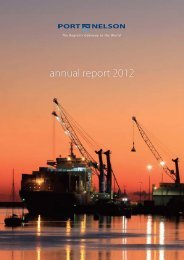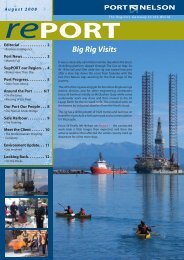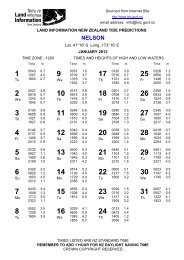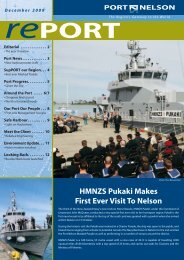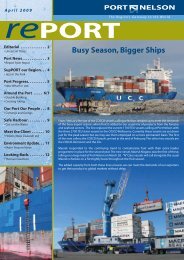Noise Management Plan - Port Nelson
Noise Management Plan - Port Nelson
Noise Management Plan - Port Nelson
You also want an ePaper? Increase the reach of your titles
YUMPU automatically turns print PDFs into web optimized ePapers that Google loves.
v. Operation of spreaders - the impact noise between lifting spreader and container;<br />
vi.<br />
vii.<br />
viii.<br />
ix.<br />
Placing the cargo on the wharf or on the ship - penetrating impact noise caused by the<br />
container landing on the wharf and on the ship.<br />
Lifting of hatch lids and placement on wharf or ship;<br />
Sliding containers into the guides on the vessel;<br />
Lifting of logs and placing into ship holds, particularly into an empty hold.<br />
12.3. Container Handling Forklifts<br />
Forklift operations that generate noise include:<br />
i. Engine revving;<br />
ii.<br />
iii.<br />
iv.<br />
Impact of spreader or forks against the container or cargo;<br />
Placement of the container on the wharf or truck;<br />
Reverse warning indicators.<br />
12.4. Ships at Berth<br />
This is noise which continues for the whole time, day and night, that the vessel is in port and is mainly caused<br />
by the generators which provide power to run winches, refrigeration plants, integrated refrigeration units,<br />
heating and lighting, etc. This is a fairly constant noise for the full duration of the ship's stay on the berth. The<br />
use of ships’ horns is another source of noise. The noise level produced by the ships are beyond the direct<br />
control of PNL but is included in the calculation of the port noise contours as part of the total port noise<br />
experience and is managed through the provisions of the NRMP.<br />
12.5. Container Refrigeration Units (Reefer Units)<br />
Refrigeration containers have a cooling unit built in. They are used in two main areas, full containers awaiting<br />
shipment and empty containers being prepared in the empty container yard. Their positions are fixed because<br />
the power is fed underground to units that accommodate up to 16 containers. The port has up to 630 power<br />
points available for containers at various locations. Up to 128 of these are used for testing empty containers.<br />
Empty containers are tested for a period between 6 and 12 hours depending on the design.<br />
Full containers are on power for an average of 2 days prior to the estimated arrival time of the ship. The power<br />
to frozen cargo cuts on and off automatically whilst power to chill containers is continuous.<br />
<strong>Port</strong> <strong>Nelson</strong> <strong>Noise</strong> <strong>Management</strong> <strong>Plan</strong> Page 16



